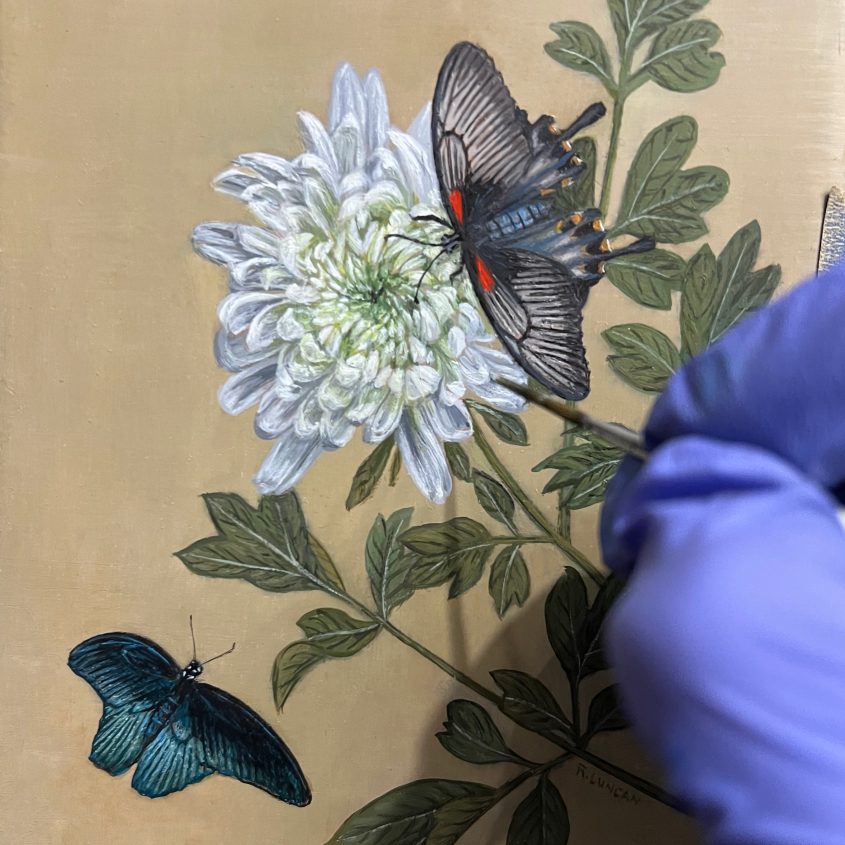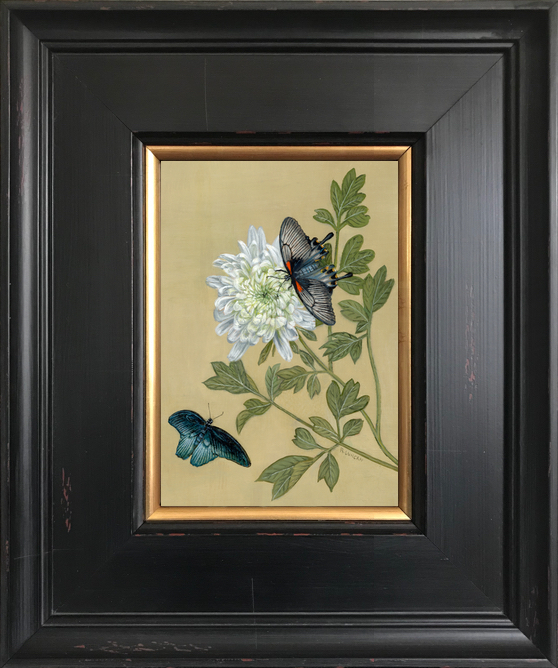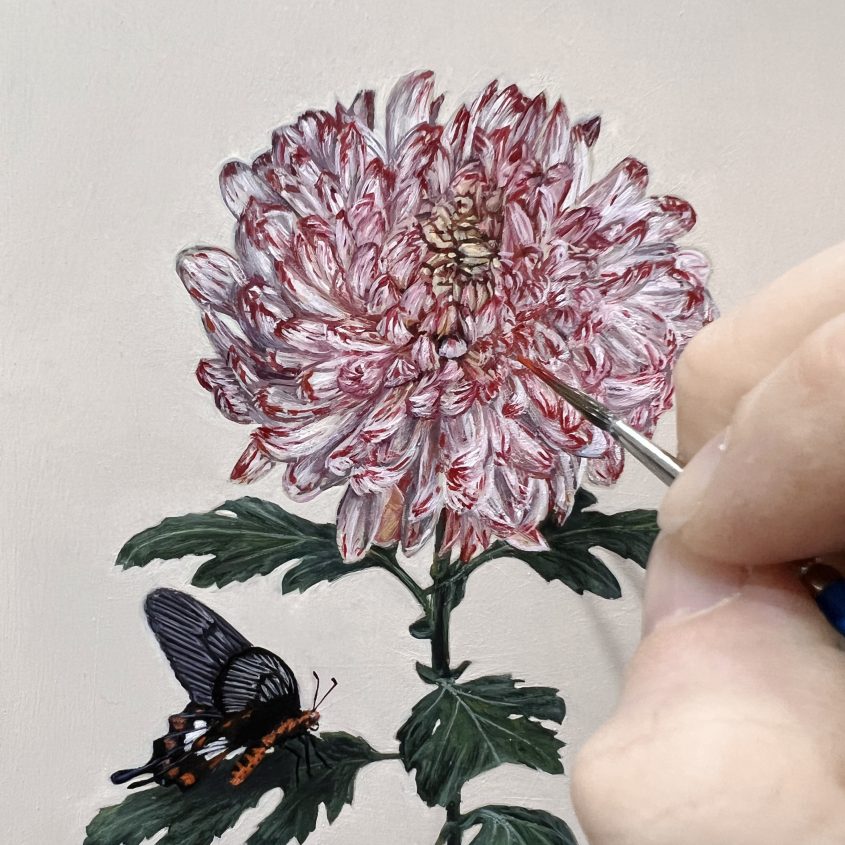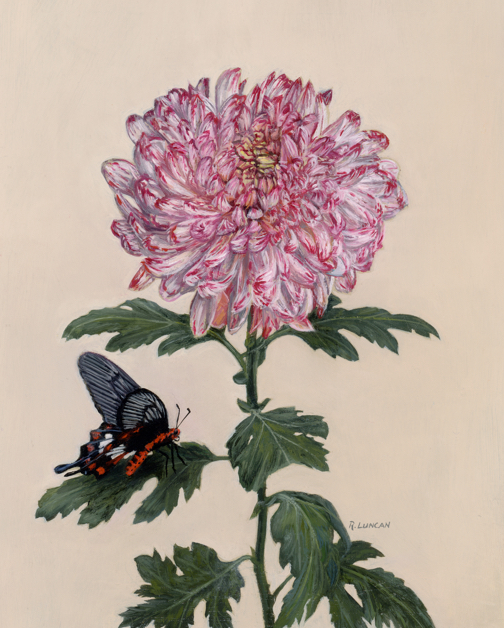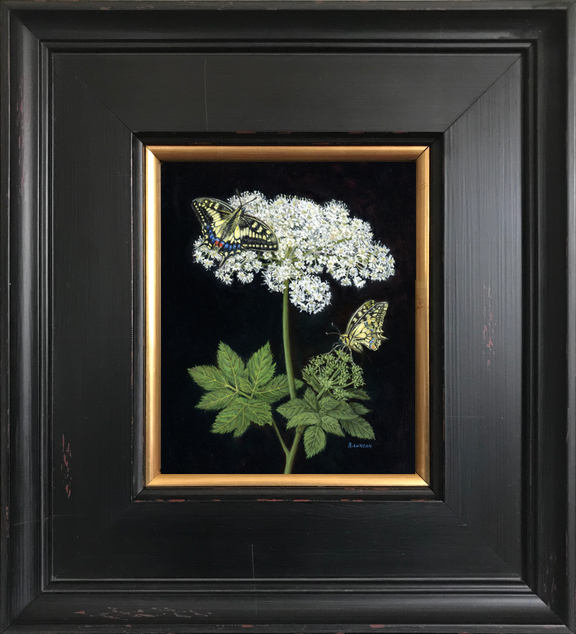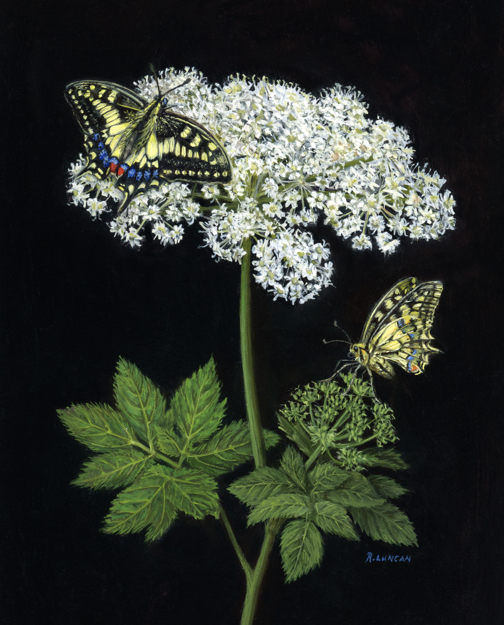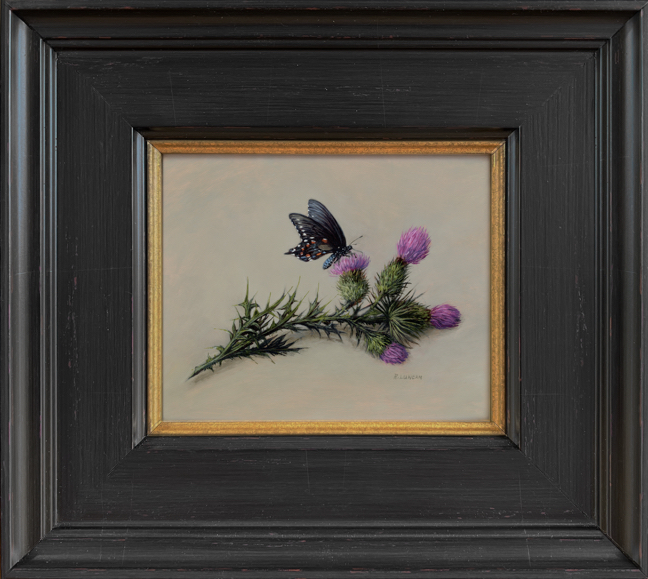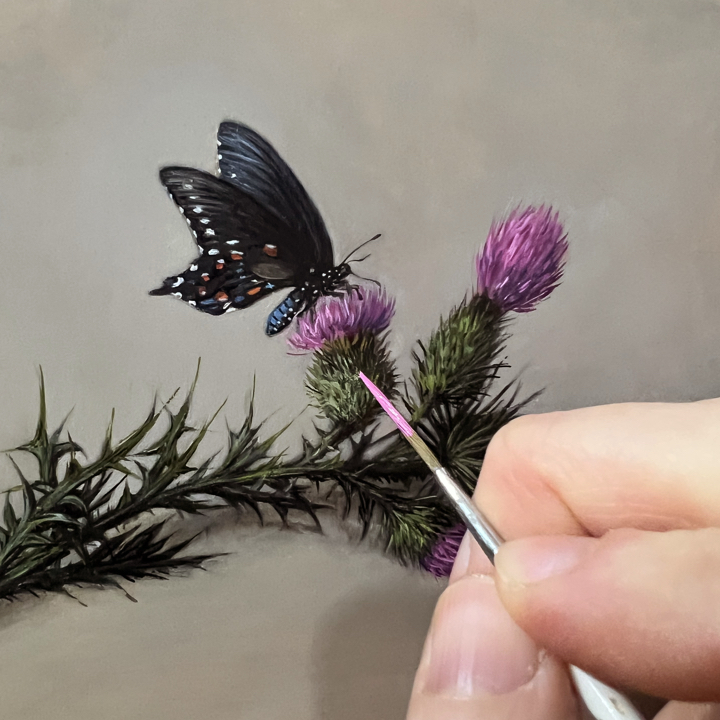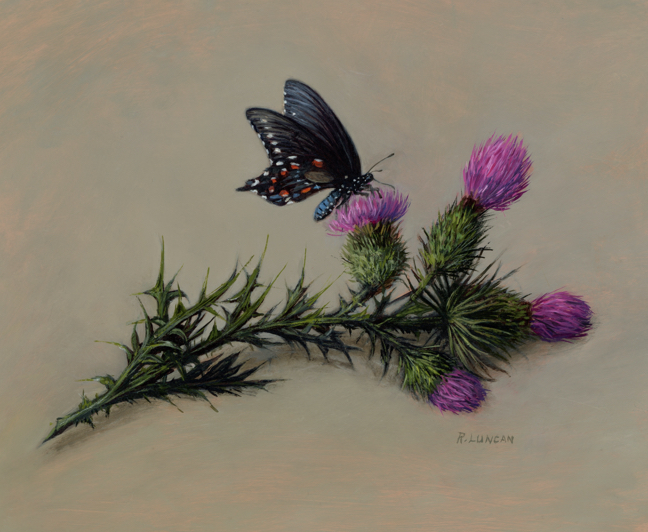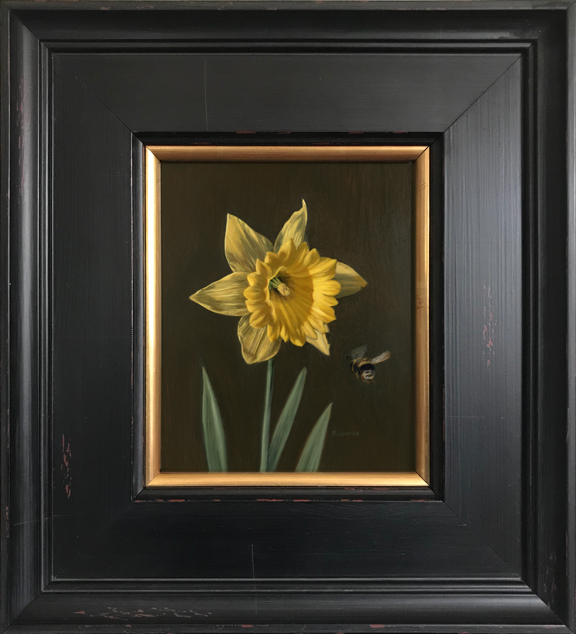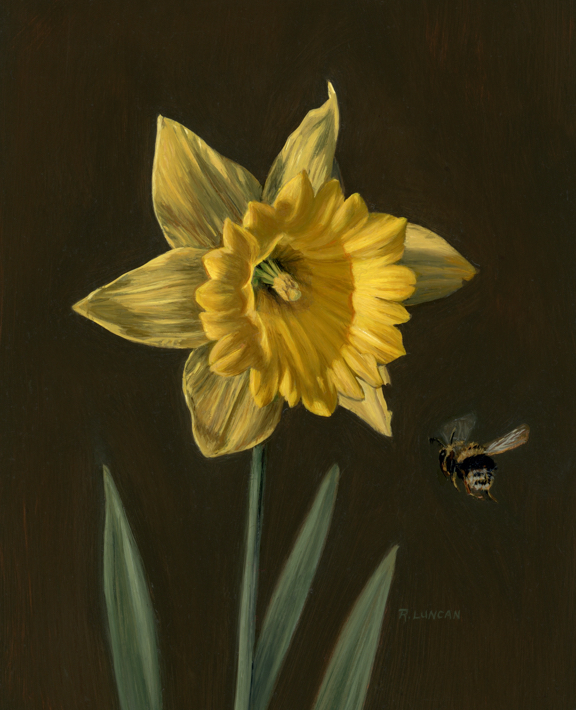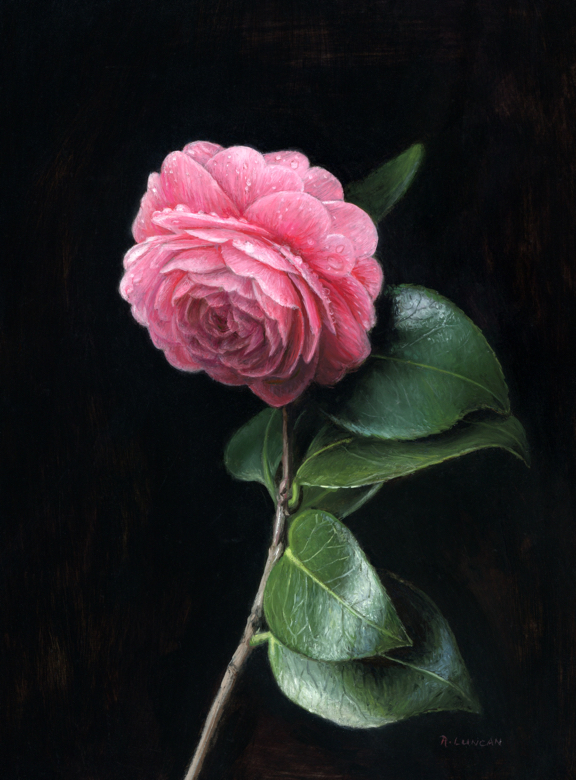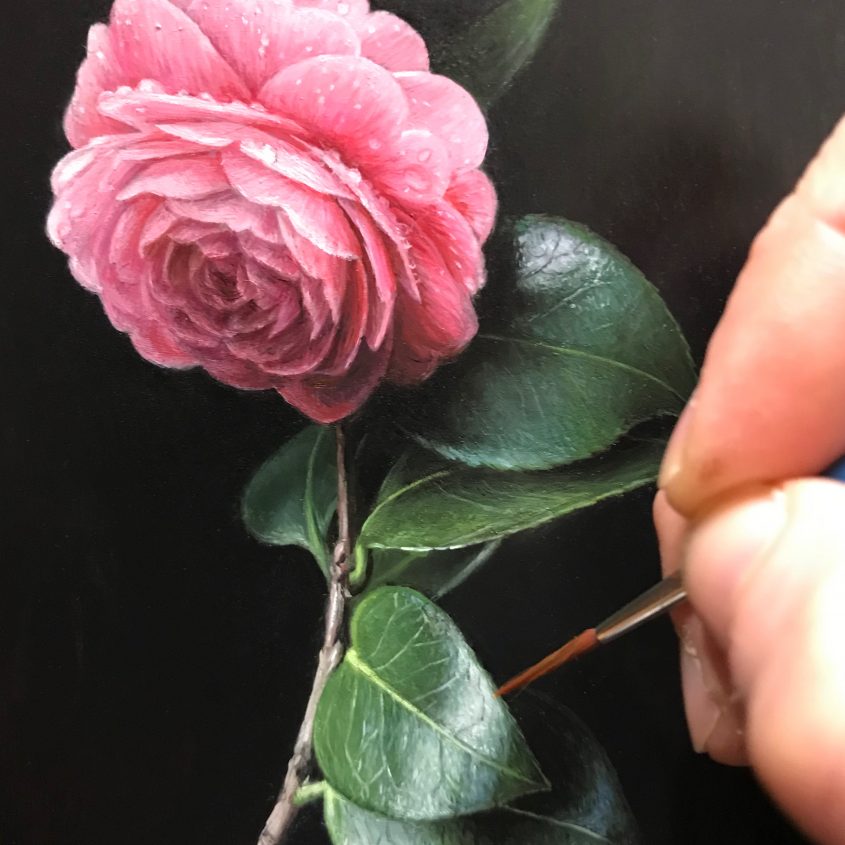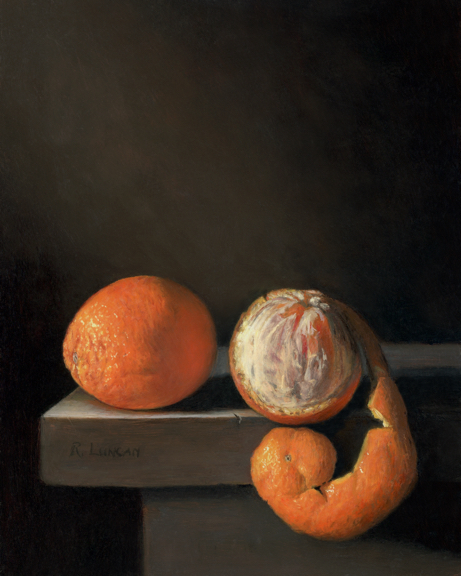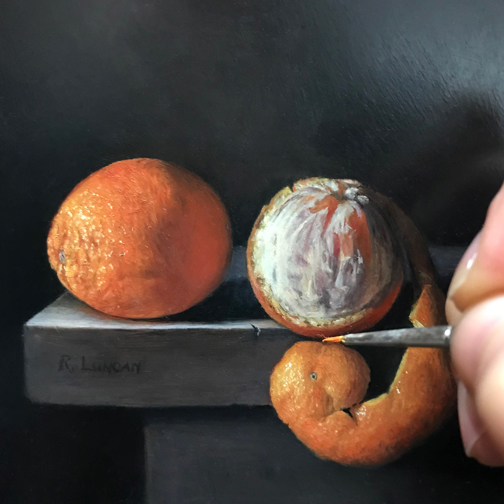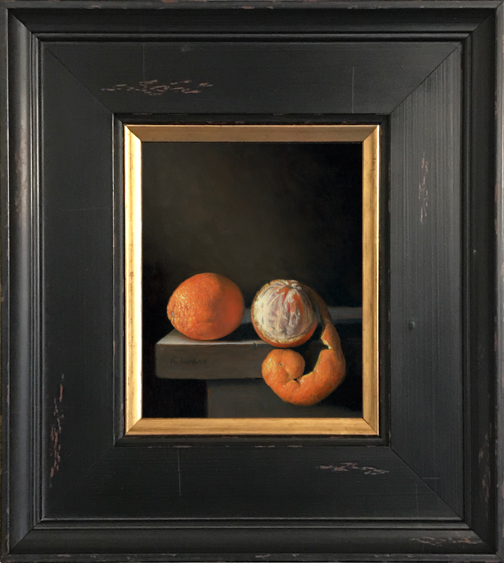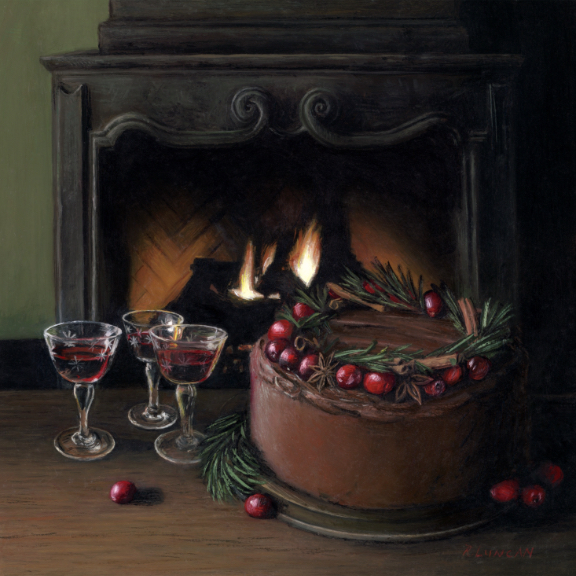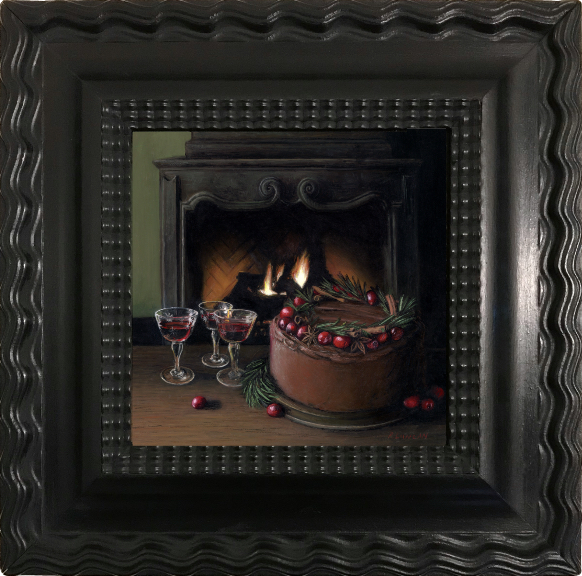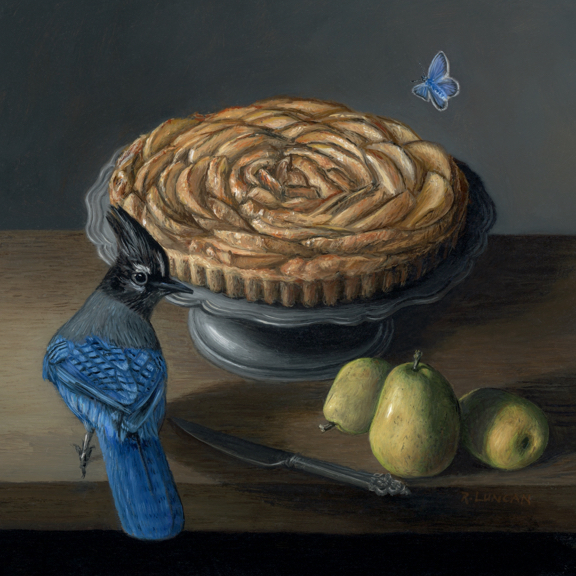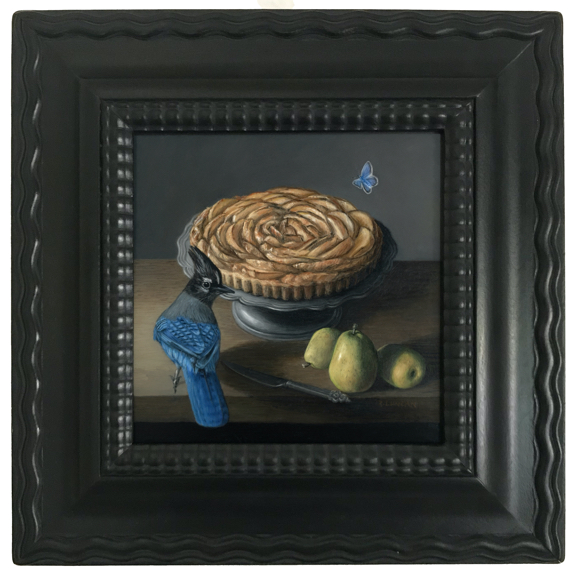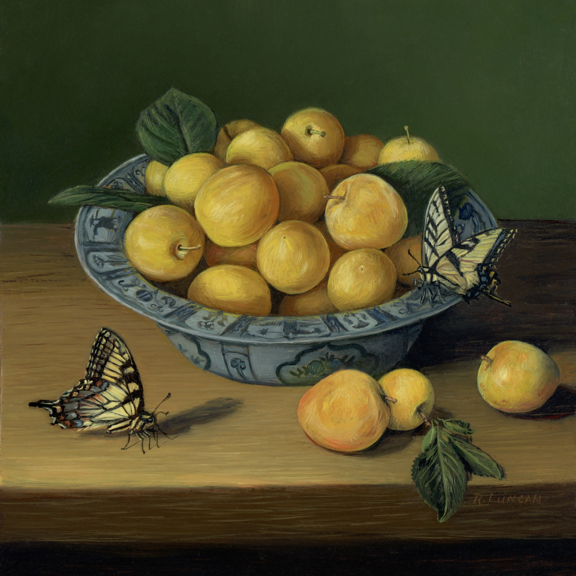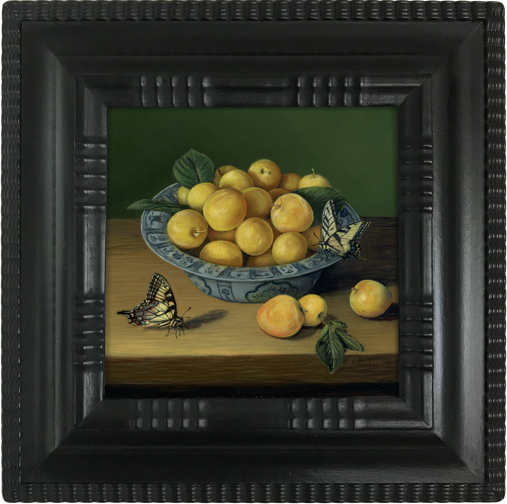Asian Swallowtails
For the month of April, I have made a botanical painting with swallowtail butterflies. The two lovely butterflies in my new painting look like completely different species, but they are in fact both Papilio lowis (Asian Swallowtails). The great difference in appearance is present in the male and the female of this species, which is called sexual dimorphism. Often the male has brighter colors to attract the females’ attention, like this dark butterfly with iridescent blue/green scales; the males are also smaller.
Scientists attribute this to differing pressures on the sexes, but the reasons for dimorphism seem to be as diverse as the species themselves! In the case of this pair, the females mimic a type of poisonous butterfly, discouraging predators. The males meanwhile kept their brilliant iridescent colors, which apparently the females find quite attractive.
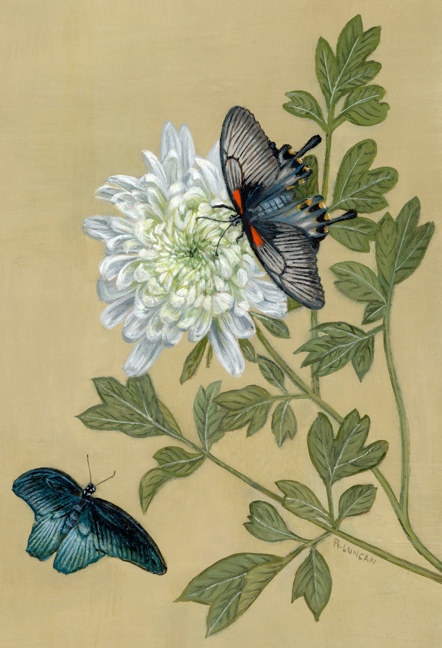
Inspiration from Art History
The inspiration for the composition on my botanical painting and the background goes back to my 14 years installing artwork for the Seattle Art Museum. I installed countless Chinese and Japanese scroll paintings, and even went to Japan a few times as a courier to oversee the installation of various asian masterpieces for the exhibition, “Luminous Jewels”. One of my favorite scroll paintings in that exhibition was, “Sixty-Four Butterflies and Moths”. The mass of insects flutter evenly throughout the painting, each with its own label. While this painting didn’t directly influence the composition for my painting, the delicate rendering of the butterflies always stuck with me. Thinking of this painting helped set the direction of how this painting would develop.
I hope you’re enjoy this month’s painting, and I hope you’re beginning to enjoy some warmer weather. I’m looking forward to the season when I see more butterflies outside the studio than inside it! Follow my newsletter to see the new monthly miniature and for exhibition updates.
